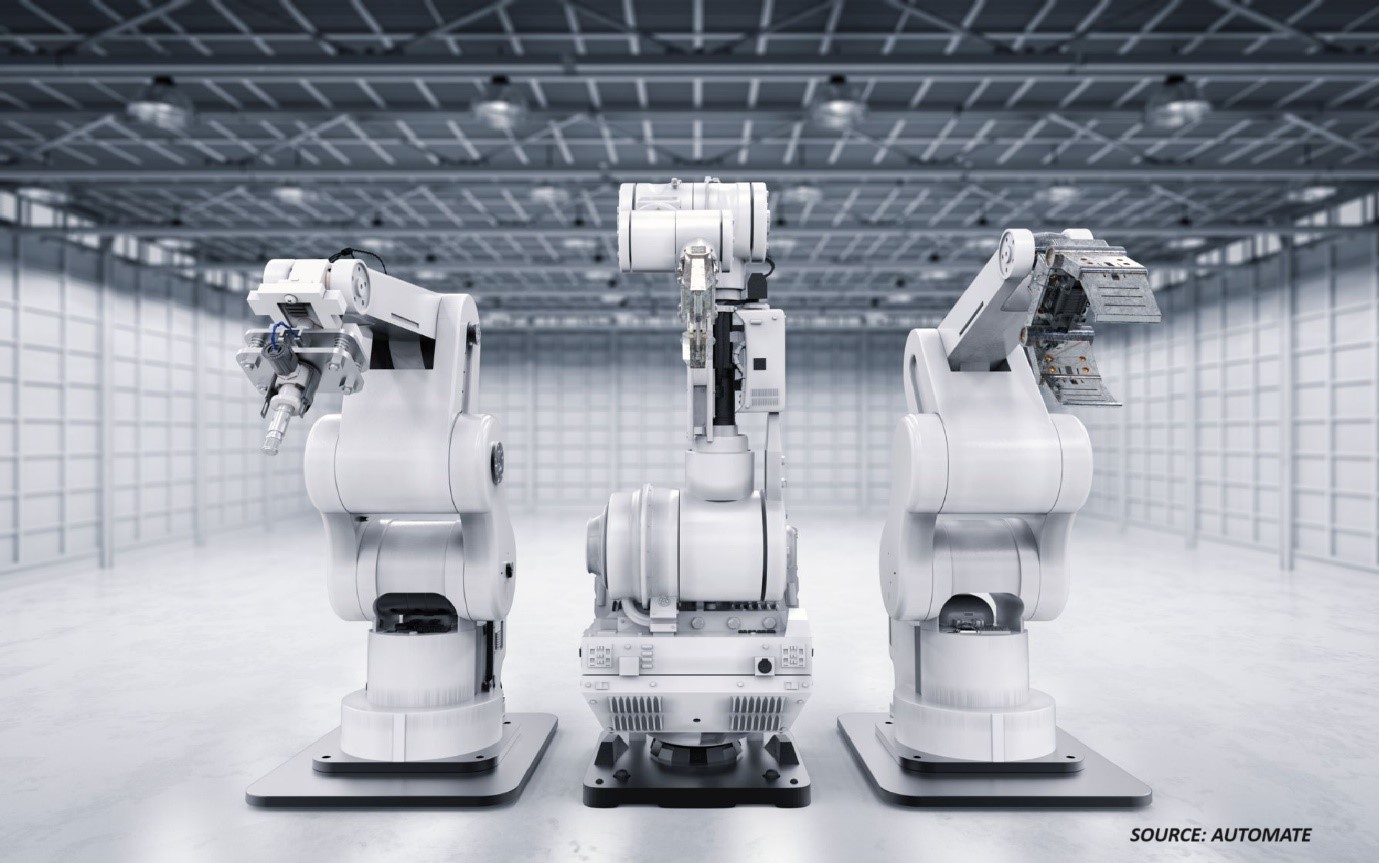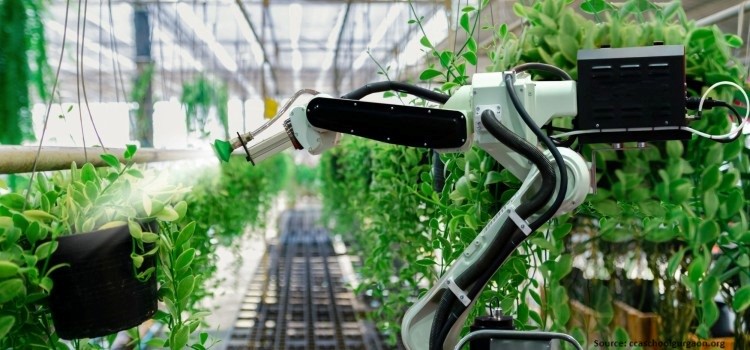
Taiwan Wafer Handling Robots Market by Product Type (Vacuum Wafer Handling Robots and Atmospheric Wafer Handling Robots), by Number of Arms (Single Arm and Dual Arm), by Robot Type (Linear Robots, SCARA Robots, Articulated Robots, Cylindrical Robot, and Others), by Operation (Motor Driven and Belt Driven), by Installation (Free Standing and Integrated), by Wafer Size (Up to 100 mm, 150 mm, 200 mm, 300 mm, and Above 300 mm), by Semiconductor Process (Oxidation (Deposition), Lithography, Etching, Cleaning, Polishing, Inspection & Testing, and Assembly & Packaging), by End Use (Integrated Device Manufacturer (IDM) and Foundries) –Opportunity Analysis and Industry Forecast, 2024–2030
Industry: ICT & Media | Publish Date: 21-May-2024 | No of Pages: 169 | No. of Tables: 132 | No. of Figures: 97 | Format: PDF | Report Code : N/A
Taiwan Wafer Handling Robots Market Overview
The Taiwan Wafer Handling Robots Market size was valued at USD 267.6 million in 2023, and is predicted to reach USD 453.7 million by 2030, at a CAGR of 7.1% from 2024 to 2030. Also, the market size was 7329.0 units in 2023, and is predicted to reach 17425.0 units by 2030, with a CAGR of 12.3% from 2024 to 2030.
A wafer handling robot represents a specialized robotic solution designed to streamline the complex procedures inherent in semiconductor manufacturing. These robots demonstrate exceptional proficiency in executing precise movements and positioning tasks with fragile semiconductor wafers. Their significance lies in their pivotal role in the creation of top-tier integrated circuits and microelectronic devices.
Operating within pristine cleanroom environments, they incorporate a diverse range of end effectors, sensors, and vision systems to securely grasp, inspect, and manipulate wafers, all while mitigating the risks of damage or contamination. By seamlessly integrating with other fabrication equipment, these robots not only boost operational efficiency and minimize errors but also foster the consistent production of cutting-edge semiconductor technologies that power an extensive array of contemporary devices.
Thriving Electronics Industry Fuel, the Growth of the Taiwan Wafer Handling Robots Market
The thriving electronics industry in Taiwan, particularly its pivotal semiconductor sector, serves as a driving force behind the growth of the wafer handling robot market in Taiwan. Taiwan boasts a robust electrical and electronics industry, which, in 2020 alone, recorded a staggering production value of $271,288 million, constituting nearly 60% of the nation's total manufacturing production value.
Furthermore, Taiwan's export value in the industry reached an impressive $213,256 million, accounting for approximately 60% of the country's total export value. These remarkable figures underscore Taiwan's prominence as a global electronics manufacturing hub.
Emphasis on Production Enhancement Boost the Growth of the Taiwan Wafer Handling Robots Market
To maintain their global competitiveness, semiconductor manufacturers in Taiwan continually enhance their production techniques. This enhancement highlights the significance of wafer handling robots, which play a pivotal role in ensuring the precise management of semiconductor wafers throughout the manufacturing process.
As semiconductor manufacturers strive to meet the substantial worldwide demand for electronic components and devices, the adoption of advanced automation solutions like wafer handling robots becomes increasingly critical.
By streamlining manufacturing processes and improving efficiency, these robots contribute to the sustained growth and innovation of Taiwan's semiconductor industry, thereby driving the Taiwan wafer handling robots market demand.
High Initial Cost Restrains the Taiwan Wafer Handling Robots Market Growth
The significant cost linked with wafer handling robots presents a formidable obstacle to the Taiwan wafer handling robots market growth. The initial investment required for acquiring, integrating, and maintaining these sophisticated automation systems poses a substantial financial burden for companies, especially those operating within limited budgets. This financial constraint has the potential to deter potential adopters from entering the wafer handling robots market in Taiwan and expanding their automation capabilities.
Utilizing Advanced Technologies such as Computer Vision and Artificial Intelligence (AI) to Enhance Precision
Incorporating advanced technologies such as Artificial Intelligence (AI), computer vision, and the Internet of Things (IoT) into robots provides significant opportunities for the Taiwan wafer handling robots market expansion.
These integrations empower wafer handling robots to optimize processes, enhance operational efficiency, and enable predictive maintenance. AI algorithms play a key role in refining robot movements, improving quality control by identifying defects in real-time, and predicting maintenance needs.
Computer vision ensures precise handling of wafers and accurate object recognition, even in complex operational environments, while IoT connectivity allows for real-time monitoring, data exchange, and predictive maintenance, thereby reducing downtime.
Additionally, the integration of advanced safety features, data analytics capabilities, and advancements in energy efficiency further emphasize the vital role of wafer handling robots as essential assets in the ever-evolving semiconductor manufacturing industry.
Competitive Landscape
The Taiwan wafer handling robots industry comprises various market players, such as include Kawasaki Heavy Industries, Ltd., Nidec Instruments Corporation, Yaskawa Electric Corp., RORZE Corporation, DAIHEN Corporation, Hirata Corporation, Rexxam Co., Ltd., KUKA AG, ULVAC, Inc., and Stäubli International AG.
Taiwan Wafer Handling Robots Market Key Segments
By Product Type
-
Vacuum Wafer Handling Robots
-
Atmospheric Wafer Handling Robots
By Number of Arms
-
Single Arm
-
Dual Arm
By Robot Type
-
Linear Robots
-
SCARA Robots
-
Articulated Robots
-
Cylindrical Robot
-
Others
By Operation
-
Motor Driven
-
Belt Driven
-
Stainless Steel Belts
-
Rubber Belts
-
Polymer Belts
-
By Installation
-
Free Standing
-
Integrated
By Wafer Size
-
Up to 100 mm
-
150 mm
-
200 mm
-
300 mm
-
Above 300 mm
By Semiconductor Process
-
Oxidation (Deposition)
-
Lithography
-
Etching, Cleaning, Polishing
-
Inspection & Testing
-
Assembly & Packaging
By End Use
-
Integrated Device Manufacturer (IDM)
-
Foundries
REPORT SCOPE AND SEGMENTATION:
|
Parameters |
Details |
|
Market Size in 2023 |
USD 267.6 Million |
|
Revenue Forecast in 2030 |
USD 453.7 Million |
|
Growth Rate |
CAGR of 7.1% from 2024 to 2030 |
|
Market Volumes in 2023 (units) |
7329.0 |
|
Volumes Forecast in 2030 (units) |
17425.0 |
|
Growth Rate |
12.3% |
|
Analysis Period |
2023–2030 |
|
Base Year Considered |
2023 |
|
Forecast Period |
2024–2030 |
|
Market Size Estimation |
Million (USD) |
|
Growth Factors |
|
|
Companies Profiled |
10 |
|
Market Share |
Available for 10 companies |
|
Customization Scope |
Free customization (equivalent up to 80 working hours of analysts) after purchase. Addition or alteration to country, regional, and segment scope. |
|
Pricing and Purchase Options |
Avail customized purchase options to meet your exact research needs. |
KEY PLAYERS
-
Kawasaki Heavy Industries, Ltd.
-
Nidec Instruments Corporation
-
Yaskawa Electric Corp.
-
RORZE Corporation
-
DAIHEN Corporation
-
Hirata Corporation
-
Rexxam Co., Ltd.
-
KUKA AG
-
ULVAC, Inc.
-
Stäubli International AG




 Speak to Our Analyst
Speak to Our Analyst


































